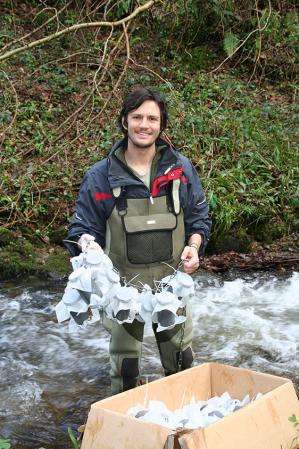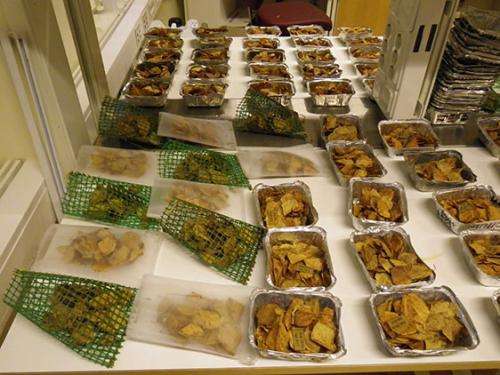Water conditions affected by insect extinction

Because of the large effects that humanity has on nature, species are already becoming extinct at rates never seen before due to increased farming, urbanization, and industrialization. Even protected natural areas of Västerbotten are suffering the risks of species extinction.
André Frainer asked himself if all species are really necessary to maintain nature working properly. Perhaps, as some might say, with a handful of species and some technology we could survive in the future as well as we do now.
In his study he chose to survey a number of stream ecosystems of Umeå, Lycksele, Hörnefors, Vindeln, Botsmark, Robertsfors, and several other localities in Västerbotten.
In these streams, common aquatic insects as stoneflies and caddisflies play important roles in maintaining freshwaters working properly. These little insects are the basic food items for many fish and, also, they help decomposing the leaf litter that falls into the streams in autumn. By feeding on litter, they turn leaves into smaller particles, 'cleaning' the streams from this dead material. Although this role does not sound very sophisticated, it has large implications to the health of our streams, lakes, and coastal waters. The decomposition of leaf litter is a natural fertilizer to freshwaters, as it makes all nutrients found in the leaf available to other aquatic organisms, being fundamental to life in streams.
André Frainer found that several disturbances in the ecosystems affect the number of insect species present, or at least the type of species present.
One example is reduced riparian vegetation and increased land fertilization around streams that run through farmland, which affects the quality and quantity of stoneflies and caddisflies. Another typical disturbance in Västerbotten is the stream channelization for log transport, which happened many decades ago. The dredging and channelization of streams still affects the composition and the role of the aquatic insects.

As a consequence, the leaf litter in the streams is not decomposed efficiently, which may affect the cycling of nutrients, the water quality and the health of the streams.
Although the water conditions in Västerbotten are good compared to the streams in southern Sweden or most of Europe, we can still do more to help maintaining the diversity of aquatic insects and therefore the health of the stream, André Frainer emphasizes.
"Healthy streams have boulders and dead trees across its channel. These structures enhance the habitat conditions for insects, allowing the insect decomposers to flourish. Large restoration efforts including such features can already been seen in Västerbotten. The riparian vegetation should also be as large as possible, helping both with the input of leaf litter, and as a natural absorbent for the excess fertilization that may occur in farmlands", says André Frainer.
Provided by Umea University


















